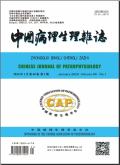Immune mechanisms and immuno-therapy in sepsis: where do we stan d?
Sepsis and septic shock have continued to produce significant morbidity and mortality, in recent times, in acutely injured patients as well as patients in the intensive care units despite advances in antibiotic therapy and in the cardi ovascular and pulmonary support for these patients. This emphasizes the need to gain a better understanding of the fundamental mechanisms of the pathogenesis of sepsis syndrome in the critically ill or injured patients. The present knowled ge of the mechanisms of septic pathogenesis clearly indicates involvement of mod ulations in the functions of the cells of body”s immune defense system, namely, monocytes/macrophages, polymorphonuclear leukocytes, and lymphocytes. Most of su ch knowledge has been derived from laboratory experiments in animal models of se ptic injury, or from studies of immune-system cells, in vitro. Clinical stud ies have also supported the role of immune perturbations. Yet, to date, very few the rapeutic approaches are available to effectively counter the sepsis-related immu ne disturbances. Functional modulations in the immune system cells, in the injured/septic hos ts, can exert not only adaptive/beneficial effects but also profoundly adverse effects on the non-immune-system cells such as endothelial, epithelial, neurona l, endocrine, neuro-endocrine, smooth muscle, skeletal muscle, and cardiac muscl e cells. The primary functional modulation in the immune-system cells after inju ry or with critical illness is activation of such cells via molecules from pat hogens, for example, lipopolysaccharide from gram negative organisms, lipoteic hoic acid/peptidoglycan from gram positive organisms, or zymosan from fungi. Suc h pathogenic molecules activate monocytes and tissue macrophages to result in th e expression and release of cytokine mediators (TNFα, IL-1, IL-6, IL-8, and IL- 10), as well as certain lipid mediators (PGE2, LTB4, PAF). While these media tors could play a host-defense role in support of the host via containment/destr uctio n of the pathogens, they could also exert detrimental effects in the host and co ntribute to host morbidity and mortality. Some of these mediators (TNFα, IL-1, IL-6, IL-8, LTB4, PAF) have been shown to be “pro-inflammatory”,and to potenti al ly exert a harmful effect on non-immune cell systems such as endothelial cells, epithelial cells, and muscle cells. Among the pro-inflammatory mediators, TNFα a nd IL-1 could play major harmful roles, and thus contribute to the injured host morbidity and mortality. Mediators, IL-10 and PGE2 have been shown to be “an ti-inflammatory” and to potentially contribute to a dreadful state of immuno-s uppression in the injured hosts, which can also lead to morbidity and mortality. Whi ch is worse, a harmful pro-inflammatory phase or harmful immuno-suppression ? Or Which occurs first, a harmful pro-inflammatory condition or a harmful immuno-su ppression? These are questions which can not be definitively answered for the g eneral population of critically ill/injured patients. It is reasonable to assum e that the answers to these question would vary from one patient subset to anot her patient subset. Thus, whether to treat the patient with a putative anti-pro- inflammatory agent or with a putative anti-anti-inflammatory agent remai ns unresolved for the general sepsis patient population. Paradoxically, TNFα, IL-1, and other pro-inflammatory mediators under certa in circumstances may serve as natural “blockers” of immuno-suppression or “pr omoters” of immune stimulation. This may be true in the case of some of the se ptic patients. Understandably, these patients should not be treated with anti-pro-inf lammatory agents. On the other hand, the anti-inflammatory mediators such as PGE 2, IL-10, and certain other naturally occurring antagonists of TNFα and IL-10 a ctions (TNFα, and IL-1 receptor antagonists) could not only be producing a cert ai n level of immune-suppression but also serving as important feed back controller of the pro-inflammatory mediators. Thus some of the naturally occurring anti-I nflammatory agents could indeed serve as adaptive/beneficial “anti-pro-inflamma tory”, therapeutic agents in certain subset of sepsis patients. Although there is little doubt that effective therapeutic control of the sep sis syndrome could be achieved via appropriate modulation of the cells of the I mmune system, at the present time we do not have an immune therapeutic regimen w hich can singly be efficacious for the general population of patients with the s eptic complication. This implies that before an effective treatment of sepsis p atients, the patients must be identified, by some diagnostic procedure, as to wh ether they need an anti-pro-inflammatory therapy or an anti-anti-inflammatory th erapy. Thus, although immuno-therapy of sepsis remains promising, its efficacy a waits further investigative work particularly through clinical studies in sepsis patients.
laboratory experiments、fundamental mechanisms、diagnostic procedure、endothelial cells、critical illness、sepsis syndrome、intensive care、immune system、animal models、septic shock、feed back
17
R3(基础医学)
2004-01-08(万方平台首次上网日期,不代表论文的发表时间)
共2页
1100-1101








